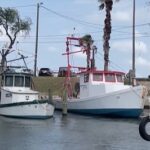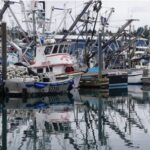Tag Archives: Dams
‘A massive enterprise’: California’s offshore wind farms are on a fast track
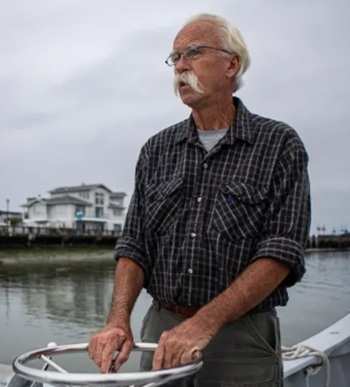 A new gold rush doesn’t begin to describe the urgency of harnessing wind off California when it comes to meeting climate goals. The first, substantial step has been taken: In December 2022, the federal government auctioned off 583 square miles of ocean waters off Humboldt Bay and the Central Coast’s Morro Bay to five energy companies — with more lease sales expected. The five wind farms will hold hundreds of giant turbines, each about 900 feet high, as tall as a 70-story building. But the still-evolving technology of floating wind farms makes it challenging to analyze the viability and impacts of these projects. Experts say a lack of existing data on potential environmental effects means that much of the scientific understanding will only begin after they are operating. A CalMatters analysis shows that California’s offshore wind projects carry a host of implications and uncertainties. Photos, more, >>CLICK TO READ<< 14:07
A new gold rush doesn’t begin to describe the urgency of harnessing wind off California when it comes to meeting climate goals. The first, substantial step has been taken: In December 2022, the federal government auctioned off 583 square miles of ocean waters off Humboldt Bay and the Central Coast’s Morro Bay to five energy companies — with more lease sales expected. The five wind farms will hold hundreds of giant turbines, each about 900 feet high, as tall as a 70-story building. But the still-evolving technology of floating wind farms makes it challenging to analyze the viability and impacts of these projects. Experts say a lack of existing data on potential environmental effects means that much of the scientific understanding will only begin after they are operating. A CalMatters analysis shows that California’s offshore wind projects carry a host of implications and uncertainties. Photos, more, >>CLICK TO READ<< 14:07
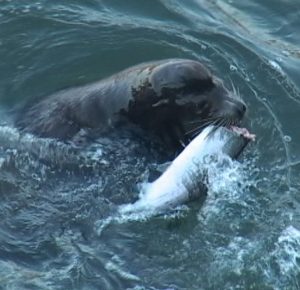
Salmon and steelhead Band-Aids
Here we go again putting a Band-Aid over a sucking chest wound. Ask anyone who spends time on Washington and Idaho salmon and steelhead waters why the salmon and steelhead are declining and you will get a variation of answers. They will range from sea lions to dams to nets to birds to commercial fishing. by Kelly M. Colliton, >click to read< 09:43

Save salmon; kill sea lions
Another spring, another much anticipated migration of “Kings of the Columbia,” our Pacific Northwest’s most revered salmonoid, the chinook salmon. Or perhaps not. At one-time chinook and their cousins migrated upstream by the hundreds of thousands. No longer. Salmon and steelhead are on the fast track to becoming endangered species. The Columbia River has its problems when considering fish migrations. The dams, commercial transportation, irrigation demands, you name it. These problems are solvable, but it will take time. There is now one glaring problem that can be simply and quickly resolved. >click to read<15:05
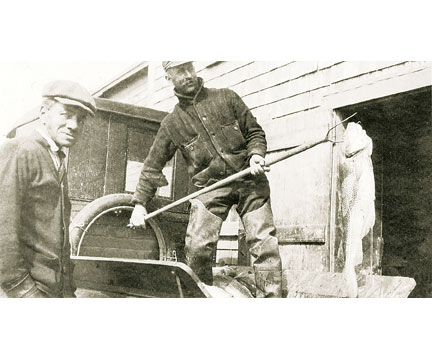
Could the Gulf of Maine’s Ground Fishery Rebound?
“The English had discovered living resources that would attract, shape, and sustain the communities of the coast of Maine for the next four centuries,” wrote journalist and historian Colin Woodard of the bounty that once existed in the Gulf of Maine in the 17th century in his book “The Lobster Coast.” “Early explorers were flabbergasted by the largesse of the Gulf of Maine, a semienclosed sea stretching from Cape Cod to Nova Scotia. They saw great pods of whales, acres of thrashing tuna, vast schools of salmon, herring and mackerel, clouds of puffins and terns, shoals of mussels and oysters, vast mudlfats infested with fat clams, cod and haddock biting at the hook, and enormous lobsters foraging in the rockweed. The waters off England and France seemed barren by comparison.” As Woodard noted, the geology and climate of the Gulf of the Maine with its 7,500-mile coastline made the area perfectly suited for a thriving fishery — a “fertile oasis in a world ocean that is, ecologically speaking, largely desert.” click here to read the story 09:27
Dams destabilize river food webs: Lessons from the Grand Canyon
Managing fish in human-altered rivers is a challenge because their food webs are sensitive to environmental disturbance. So reports a new study in the journal Ecological Monographs, based on an exhaustive three-year analysis of the Colorado River in Glen and Grand Canyons. [email protected] 11:55


































